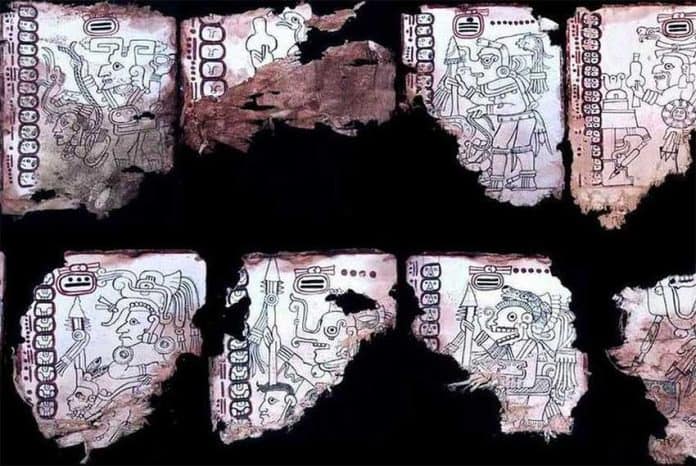An almost 1,000-year-old Mayan codex is the real deal, the National Institute of Anthropology and History (INAH) announced yesterday, dispelling long-held doubts over the pictographic text’s authenticity 54 years after it was sold by looters.
An expert team made up of historians, archaeologists, anthropologists and scientists among others, judged the codex authentic and said that the calendar-style text is the oldest known legible pre-Hispanic document.
It is estimated to have been made between 1021 and 1154 AD.
The codex was bought by Mexican collector Josúe Sáenz in 1964 and first exhibited in 1971 at the Grolier Club in New York, which led it to becoming known as the Grolier Codex.
Sáenz returned the codex, which contains a series of predictions and observations related to the astral movement of Venus, to Mexican authorities in 1974.
The authenticity of the tree-bark folding “book,” which will now be known as the Mexico Maya Codex, had been doubted due to the fact that it was looted and because its design was simpler than other surviving pre-Hispanic texts.
In a statement issued yesterday, INAH said the codex’s “austerity” was due to the time in which it was written, predating other works that have been found.
Chemical tests proved the authenticity both of the pages and the pre-Hispanic inks used to write it, the institute said.
Prior to its discovery, the codex spent hundreds of years in a cave in Chiapas, during which time as many as 10 pages may have been lost, INAH explained.
The expert judgement ends decades of speculation about the document’s authenticity.
“For a long time, critics of the codex said the style wasn’t Mayan and that it was ‘the ugliest’ of them in terms of figures and color,” said INAH researcher Sofía Martínez del Campo.
“But the austerity of the work is explained by its epoch; when things are scarce one uses what one has at hand.”
The full results of the expert team’s analysis of the codex are being discussed at a symposium currently taking place at the National Museum of Anthropology in Mexico City.
Mayan texts are written using syllabic glyphs, a form of writing that has been compared to Egyptian hieroglyphs in which stylized painted figures represent a syllable.
Source: Milenio (sp), Associated Press (en)
